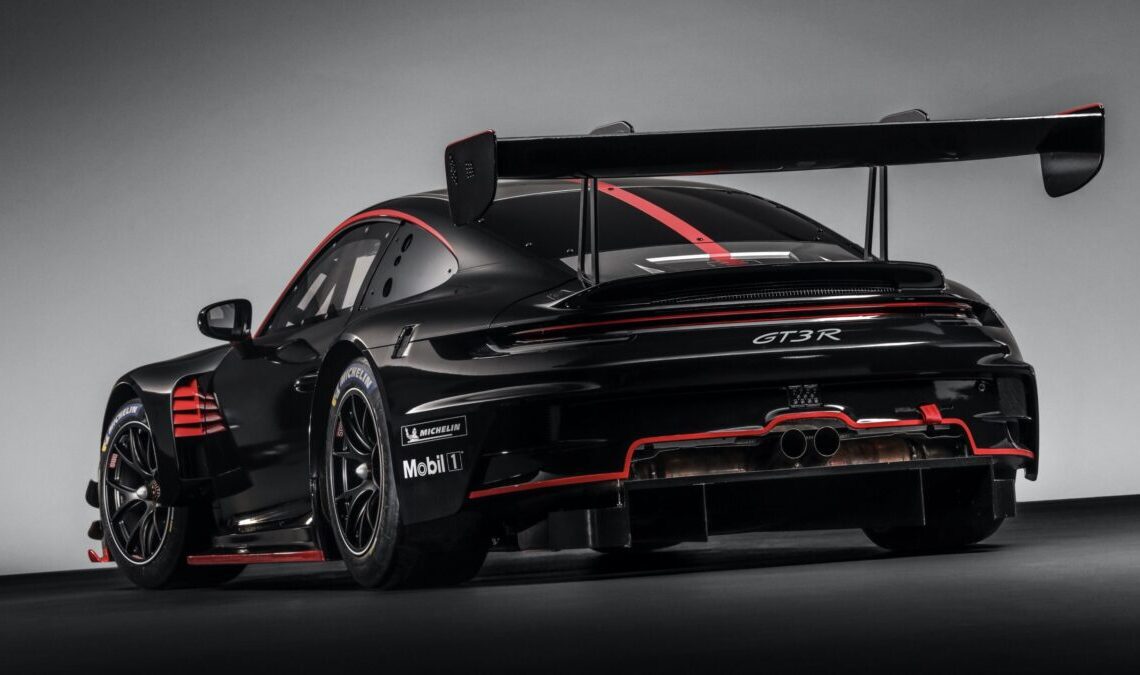Porsche’s 911 992 GT3 R features a number of upgrades to its previous model, including revised aerodynamics, an upgraded engine to 4.2 litres, wider track, longer wheelbase and a wealth of safety features that are targeted at making the car easier to drive, more durable and also faster.
The base model is the 992 GT3 production car, with the choice of not waiting for the GT3 R version to be made early on. This allowed the development team to start work in the summer of 2019. The team looked at all the weaknesses of the 991 Generation 2 and sought to fix them with the new model.
The 992 GT3 is built to a completely new set of regulations compared to the old car. Gone are the days when a committee decided on what is permitted and a manufacturer had to go cap in hand to ask that its development be accepted. Now a stable set of technical regulations has been created by the FIA in conjunction with the manufacturers, and in turn they have the chance to build more extreme cars. The limiting factor is one of cost, and the fact that the cars are sold as customer products, occasionally competing in factory hands.
Aerodynamics
The two key areas of development for the 992 GT3 R are the engine and the aerodynamics. The development team says that everything has been designed to try to improve driveability, particularly for the customer drivers, but there are clear differences in potential performance compared to the 991. Porsche extended the wheelbase and the track in order to improve the stability of the car, and in doing so extended the width of the floor considerably. That gives more opportunity for downforce generation, but it has also made other changes to the floor area.
The splitter height has been raised, so the section ahead of the front axle is higher than the rest of the floor. There is a step just by the front axle where the floor reverts to minimum height, and the team says that is due to pitch sensitivity and maintaining airflow to the splitter and underfloor even under heavy braking.
‘We have elevated the splitter, and with the elevation we have turning vanes in place guiding the air through and under the car,’ says the car’s project manager, Maximilan Muller. ‘The splitter being higher takes away the aero sensitivity, so as the car dives down under braking the car stays in the aero window. You notice [the difference] at all speeds. Any time you are touching the [floor with your] splitter you take your own airflow [from the…
Click Here to Read the Full Original Article at Racecar Engineering…

